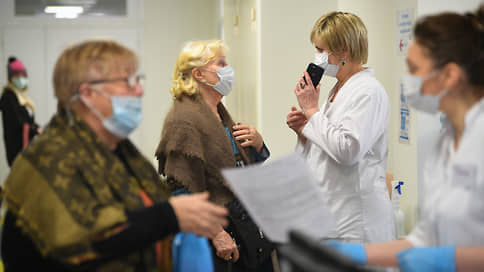The salaries of doctors will be considered more closely – Newspaper Kommersant No. 169 (7370) of 09/14/2022
[ad_1]

The Federal Compulsory Medical Insurance Fund (FFOMS) plans to expand the collection of data on the salaries of medical workers in regional health care in order to more effectively track the yet not always successful implementation of the May 2012 presidential decrees. Medical organizations will report on the income of employees providing medical services not only under the territorial, but also under the basic CHI program. The FFOMS will collect the same statistics from federal medical centers.
FFOMS intends to expand the practice of tracking the level of salaries of medical workers, follows from the draft order of the fund, published on regulation.gov.ru. The project amends the order on the procedure for reporting on the salaries of employees of medical organizations in the field of compulsory medical insurance. The Fund wants to receive data from them on the average number of employees not only for the territorial, but also for the basic health insurance program. There are also requirements for federal medical centers that are part of the CHI—they will have to provide data on the number of employees, their salary fund, and average monthly payments in accordance with the volume of medical care distributed under the territorial CHI program.
The explanatory note to the draft order notes that updating the reporting forms will allow the FFOMS to more effectively monitor the implementation of the May 2012 presidential decrees by the regions, according to which the authorities of the subjects had to increase the salaries of certain categories of state employees. In particular, the remuneration of doctors should be at least 200% of the average for the economy of the region, for middle and junior medical staff – 100%.
The strengthening of control over the execution of decrees can be explained by the fact that over the past ten years, the regions, if they have reached the specified wage threshold, have not been on a permanent basis. The reason for this was called the lack of funds from regional budgets. According to Rosstat, according to the results of the first half of this year, in the Russian Federation as a whole, the salary of doctors was 191% of the average Russian (95.3 thousand rubles against 49.6 thousand rubles), nurses – 96.4% (47 thousand rubles). rubles against 49.6 thousand rubles), the youngest – 81% (40.2 thousand against 49.6 thousand rubles).
With the help of additional data, the FFOMS probably also plans to track the ratio of fixed and variable parts in the salaries of medical staff. Earlier, the Ministry of Health sent a letter to the regions in which it recommended that they “intensify work to improve the systems of remuneration of medical workers” and ensure that the share of salaries in the salary structure does not fall below 55-60% (excluding compensation payments for work in special climatic conditions; more see Kommersant of September 2).
Putting forward new requirements for the territories, the federal center is trying to make the financial situation of regional health care systems more sustainable. Earlier, the Ministry of Health proposed to the constituent entities of the Russian Federation a new methodology for calculating the compulsory medical insurance tariff for the non-working population, thus planning to increase the income of the compulsory medical insurance system in 2023-2024 by 150 billion rubles. (see Kommersant dated August 23). Yesterday, the department published a draft government decree that changes the methodology for providing subventions for compulsory medical insurance for the regions. In particular, it is proposed to increase the limit value of the coefficient of price differentiation of budgetary services from 5.5 to 6.5. This will allow the FFOMS to allocate more funds for territorial programs to regions where this coefficient is higher than 5.5 (including Yakutia, Kamchatka Territory, Magadan Region, Nenets and Chukotka Autonomous Okrugs).
[ad_2]
Source link






